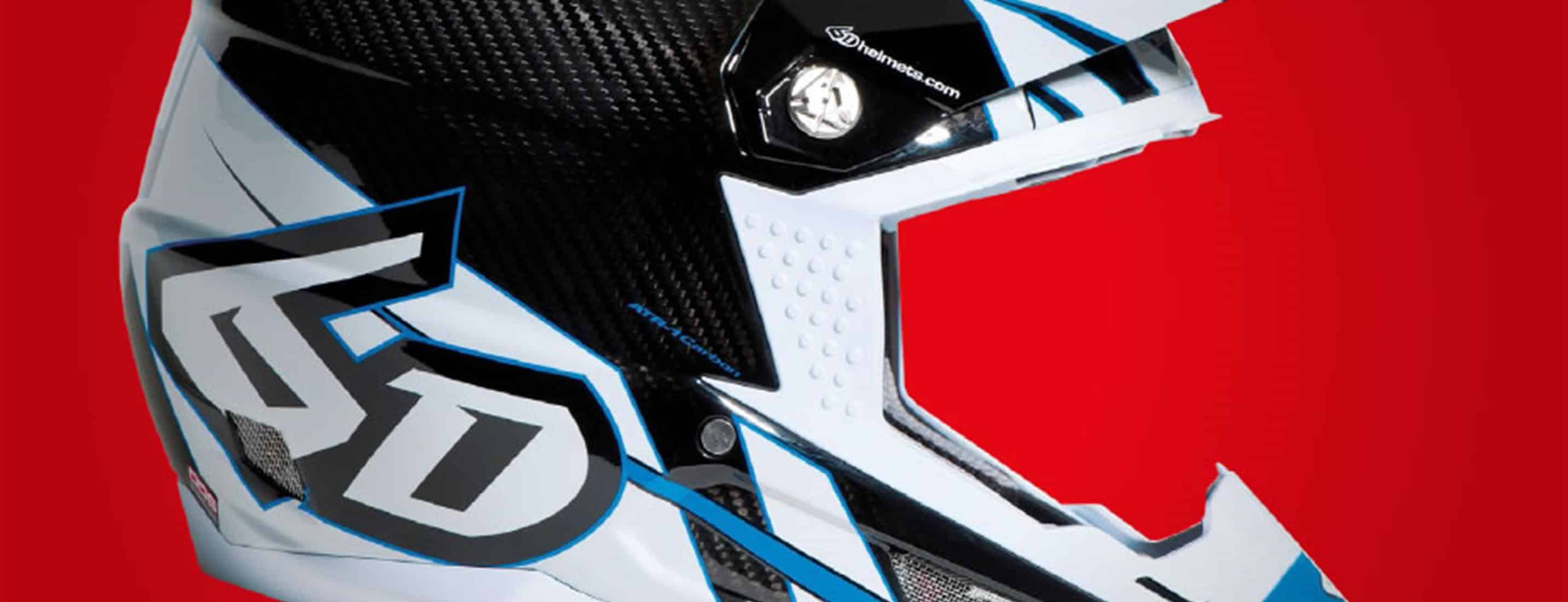6D ATR-1
What is it?
When introduced in 2013 the 6D ATR-1 was a unique product. A helmet designed with an uncoupling between the outer and inner shells. The Omni-Directional Suspension (ODS) system places an array of dampers between the two shells (they look like little hourglasses) allowing a rotation of the inner shell to reduce/slow the transfer of energy between the outer and inner, and thus reducing the potential for brain injuries, such as concussions etc. Unique in 2013, although since replicated in the Bell Moto 9 (Flex) and Troy Lee Designs SE4 (MIPS).
Nonetheless it’s a move away from conventional helmet design, and while its selling point is vastly superior performance in ‘angular accelerations’ created by oblique angle impacts, it’s also claimed to outperform conventional helmets in regular low and high speed impact testing. Maybe one day all helmets will be made this way? The ATR-1 Carbon Electric version we’ve been testing retails for $845/£550.
How did it rate?
Warren Malschinger: It’s certainly a comfortable helmet. I also like that 6D offer quite a few options on replacement liners and cheek pads so you can customize the fit. I didn’t have access to those when I collected the helmet but would have gone for slightly larger cheek pad, to make it fit tighter (as is my preference). As it was, I’ve ridden over 300km over two days in torrential rain, through mud and water, and the helmet has fared well and stayed comfortable.
I noticed the helmet is physically bigger than most motocross type helmets, probably to accommodate the ODS system, but that doesn’t transfer to the wearing experience. It feels fine and at 1590 grammes (the weight is kept down by making the shell a mix of carbon fibre, Kevlar and composite fibreglass) it’s not heavy so I did not suffer any fatigue (of the neck).
As I didn’t (fortunately) find myself in a situation of testing the safety benefits of the design the standout feature for me was instead the ventilation – I think there’s something like 18 intake ports, 13 transfers, and four exhaust ports listed! There are plenty around the mouthpiece increasing airflow in a crucial area. And as I sweat quite a bit I appreciated the six intakes across the forehead that feed into the liner and flow air over the head – I’d say this helmet offers the best ventilation that I’ve ever encountered.
Riding in torrential rain I found the peak gave quite a bit of protection, being long enough to block out the mud and rain, it worked really well. The ATR-1 also has all the other now standard features in a high end crash helmet: a Coolmax antibacterial comfort liner (removable for washing), emergency-removable check pads, shear-away peak screws – all quite standard these days. There’s also a cutaway to clear the clavicle (collarbone) and a pad on the chin piece to help protect the sternum should you force your chin into your chest in a crash.
The ATR-1 comes with a three-year limited warranty, and post-crash rebuild programme (subject to the shell still being viable) – the only manufacturer doing this (albeit this requires sending the helmet to 6D in California).
In all, I was super-impressed and I’ve no hesitation in rating it at 5/5. That said, I’d like to see one small improvement – can the mouthpiece be made compatible for a hands-free hydration system, please?



